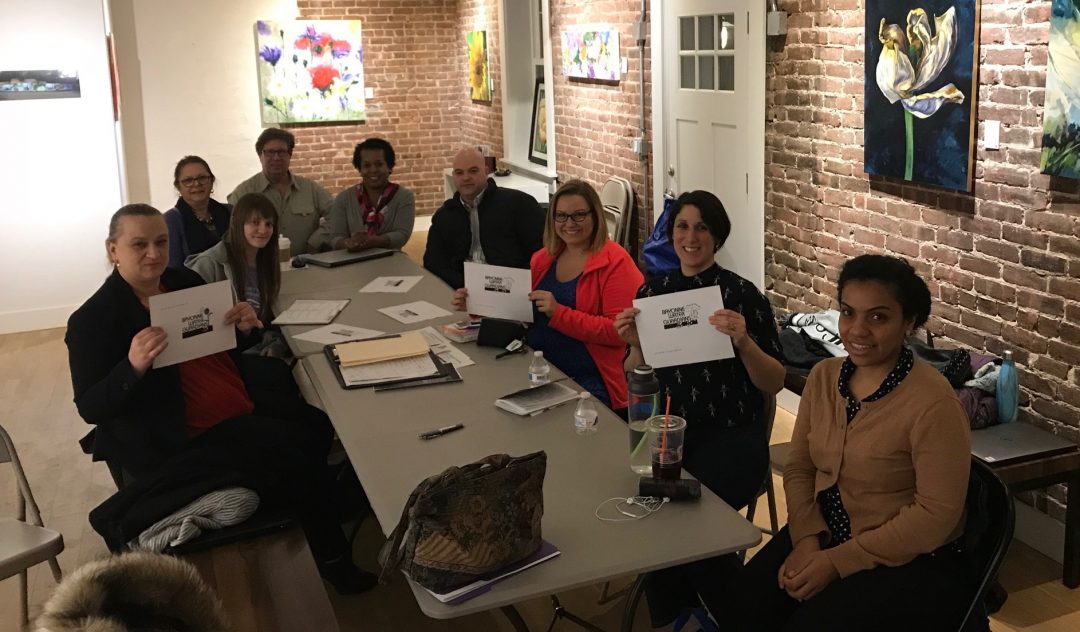Infrastructure Week is almost here! This is a national week of events, from May 13 to May 20, that highlight the need to invest in all kinds of infrastructure.
If you live, work, or run a business in a community with a combined sewer system, you know that one of the must urgent infrastructure investment priorities has to be our sewer systems. Municipalities and utilities must develop plans to reduce the combined sewer overflows (CSOs) that occur during heavy rainfall and discharge raw sewage into our neighborhoods and waterways. Reducing CSOs will be a generation-long effort, that will cost billions of dollars, and result in years of construction disturbances. You as ratepayers will be asked to pay at least part of that cost.
Alternative approaches to address CSOs are being evaluated based on cost and performance, and the Sewage-Free Streets and Rivers campaign is asking that benefits to communities be included as part of the evaluation. Your input in needed now, since the Evaluation of Alternatives report is due to the state Department of Environmental Protection by July 1.
Have you made your voice heard about which alternatives you want to see included in this evaluation? Have you been able to advocate for solutions that provide local jobs, improve the health of people in your community, and address the challenges of a changing climate? Now is your chance! Municipal groups like the Bayonne Supplemental CSO Team and regional groups like Bergen County CSO Group and North Hudson Sewerage Authority are all meeting during or just after Infrastructure Week, and all of these meetings are open to the public. Find a meeting close to you, and have a say in your local stormwater infrastructure investments!
May 14 – Bayonne Supplemental CSO Team meeting
May 15 – Bergen County CSO Group meeting for the Bergen County Utilities Authority, covering the Borough of Ridgefield Park, the Borough of Fort Lee, and the City of Hackensack
May 20 – North Hudson Sewerage Authority Supplemental CSO Team meeting for the City of Hoboken, the City of Union City, the Township of Weehawken, and the Town of West New York
May 28 – The Clean Waterways, Healthy Neighborhoods Initiative meeting for the City of Bayonne, Borough of East Newark, Town of Guttenberg, Town of Harrison, Jersey City Municipal Utilities Authority, Town of Kearny, City of Newark, City of Paterson, North Bergen Municipal Utilities Authority and Passaic Valley Sewerage Commission.
Please stay tuned for confirmation of the Perth Amboy CSO Supplemental Team meeting, which will either be on May 16 or 23 at 7 pm. For more information please contact Luis Perez Jimenez at Middlesex Water Company.





 On March 7, after several years of measuring and modeling, representatives from the
On March 7, after several years of measuring and modeling, representatives from the
 What happens when you flush the toilet? Mary Anna Evans answers this question in her article, “
What happens when you flush the toilet? Mary Anna Evans answers this question in her article, “
 Newark People’s Assembly, a new initiative launched by the city, is hosting a series of town-hall meetings to discuss alternative ways to solve the stormwater and sewage overflow issues in the City of Newark. There will be 10 community meetings in total, two in each of Newark’s five wards. Drew Curtis, the senior equitable development manager of Ironbound Community Corporation, who is organizing these meetings with the city, said he wants “to ensure real and authentic feedback from residents on the alternative ways to solve stormwater and Combined Sewer Overflow issues.” The main topics to be discussed during these meetings will be flooding, water quality, litter and illegal dumping, bad smells, and affordability of the different alternatives.
Newark People’s Assembly, a new initiative launched by the city, is hosting a series of town-hall meetings to discuss alternative ways to solve the stormwater and sewage overflow issues in the City of Newark. There will be 10 community meetings in total, two in each of Newark’s five wards. Drew Curtis, the senior equitable development manager of Ironbound Community Corporation, who is organizing these meetings with the city, said he wants “to ensure real and authentic feedback from residents on the alternative ways to solve stormwater and Combined Sewer Overflow issues.” The main topics to be discussed during these meetings will be flooding, water quality, litter and illegal dumping, bad smells, and affordability of the different alternatives. 



 Recent flooding has exposed the need to address the City of Camden’s aging sewer system. Mayor Frank Moran recognizes the challenge and is working on a plan to reduce flooding and combined sewer overflows. “We can put together a plan, as we put the right folks in office into position to make the determination as to what it is that we need to do,” Moran said.
Recent flooding has exposed the need to address the City of Camden’s aging sewer system. Mayor Frank Moran recognizes the challenge and is working on a plan to reduce flooding and combined sewer overflows. “We can put together a plan, as we put the right folks in office into position to make the determination as to what it is that we need to do,” Moran said.